Getting the best vitality from a fern depends on finding the best location for it to grow. Given the wide variety of fern species, the precise conditions that will be perfect for a particular plant will depend on some specific factors, but there are also some good general principles that apply to almost all fern varieties.
The majority of fern species grow well in partial shade, on acid to neutral soil, and in climates without extremes of temperature in summer or winter. The critical factors for good growth are sun exposure, wind shelter, soil composition and moisture levels.
This combination of factors reflects the natural habitat of ferns: in woodland undergrowth, and on rocky, wet ground near ponds and rivers. Although this is the classic environment for many ferns, in fact there are varieties that can grow in almost every ecological niche.
So, how do you best find the right combination of plant and place? Well, there are a few key principles.
Sun exposure
Traditionally ferns are grown under trees, beside walls, and in shady areas of the yard where flowers might struggle from the lack of sunlight. One of the main uses of ferns in gardening is to add interest to these neglected corners.
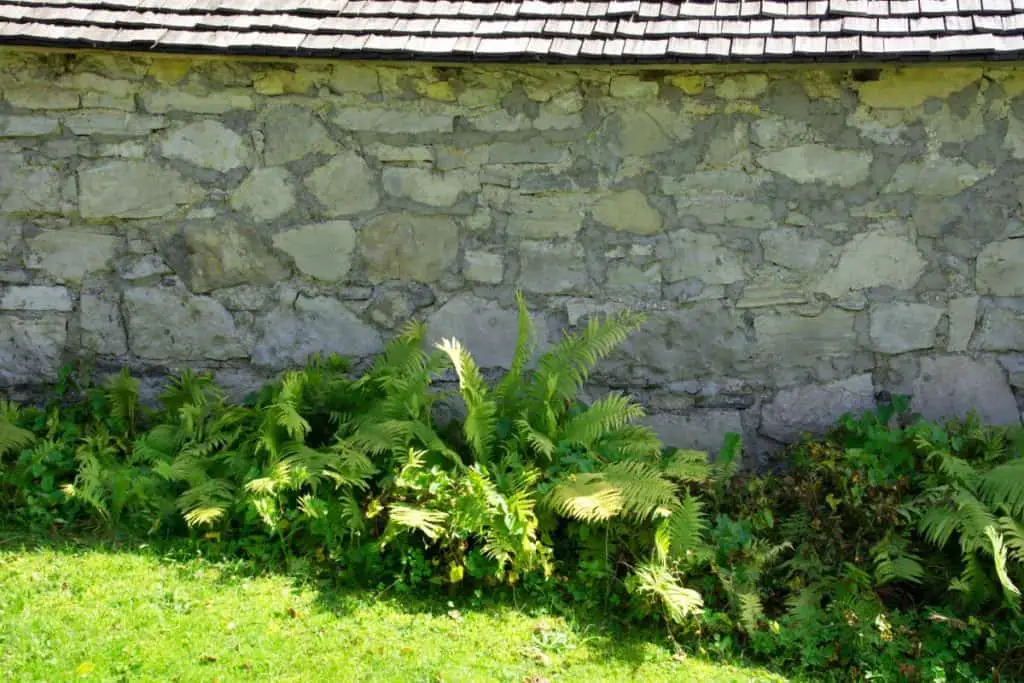
Ferns evolved millions of years ago in densely forested environments and so are adapted to the low light levels and dappled sunlight of undergrowth. Partial or full shade remains the favored conditions for most fern varieties, and too much sun can lead to damage to the fronds. In general, the worst place to plant ferns is on exposed, south-facing slopes.
Beyond this general principle, though, there are many varieties that can grow in direct sun, especially if they are well watered. The lip ferns (Cheilanthes spp.) are especially well adapted to hot, dry climates and can thrive even under desert conditions.
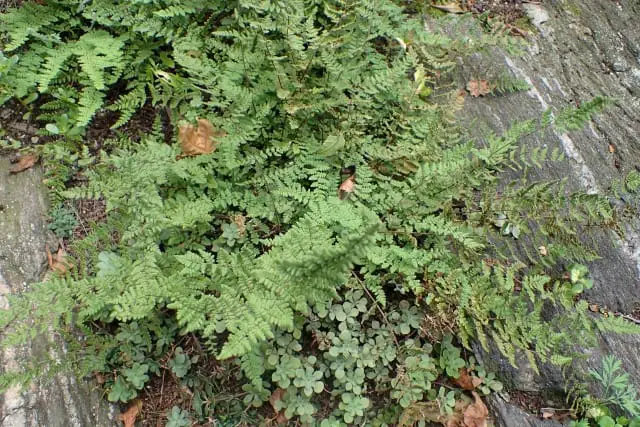
Hairy lip fern
- Cheilanthes lanosa
- Evergreen
- Full sun
- Height: up to 0.5 m
- Soil: acid, neutral or alkaline. Moist, well-drained.
Image credit: Krzysztof Ziarnek
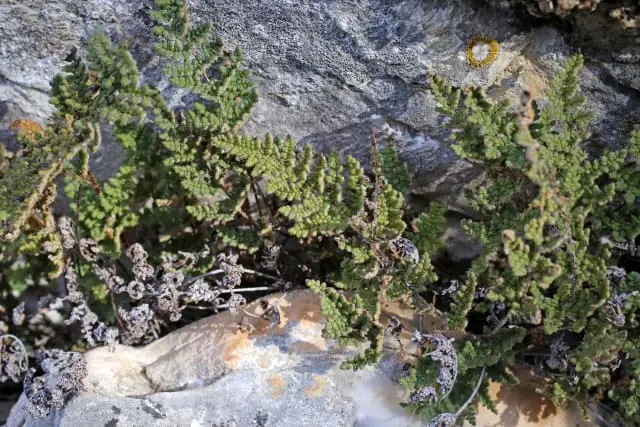
Woolly lip fern
- Cheilanthes tomentosa
- Evergreen
- Full sun
- Height: up to 0.5 m
- Soil: acid or neutral. Moist, well-drained.
When selecting a specific plot for your fern, it pays to plan ahead and anticipate how the sun exposure of the site changes across the course of the day. Many ferns are perfectly happy with short stretches of gentle sun in the morning or afternoon, but the full glare of midday is too much for most varieties.
Climate
The second major factor in finding the best place for a fern is the annual variation in temperature and weather. Ferns vary in their hardiness, with some species being able to tough out the coldest winters, and others being so delicate that they can only really be grown as indoor plants in much of the world.
One of the best ways to ensure a good match between fern and climate is to favor native varieties for your own planting. Ferns that grow well in your local region will obviously be well adapted to the climate they will encounter, and so this protects against the risk of seasonal stress.
You need not be limited by this principle, though, as there remains a huge range of choice in the types of ferns that can grow in any given hardiness zone. Check the information supplied from nurseries and garden centers to find a match to your own climate.
Finally, if you are willing to take on the task, it is also possible to prepare even tropical varieties to protect them against cold spells, and even to recover ferns that have been caught out by unexpected freezes.
Shelter
The next big factor to consider is wind. Exposure to strong winds can both physically damage the fronds of many ferns, but also lead to dehydration, which, if prolonged, could kill the plant.
Most gardeners tend to plant ferns beneath sheltering trees or bushes, or against rocks or walls. This is partly an esthetic choice, but also provides useful protection from direct winds.
A similar issue arises from planting larger growing ferns near to paths or doorways. Physical damage from people or pets brushing against the fronds can making for an unsightly mess that would need to be pruned back. Check the growing instructions on your specimen to be sure you plan for enough growth space if planting near the edge of walkways.
Soil composition
Even the ideal shady spot in a mild climate will not work out if the fern cannot survive in the soil in which it is planted. For pots and planters it is of course possible to pick the ideal potting mix, but for outdoor planting the soil conditions can be a limiting factor.
Neutral soil is the best compromise, and very few varieties of fern will fail under these conditions. As a general rule, acid conditions are tolerated by a wider range of ferns than alkaline conditions. For example, the popular Japanese painted ferns (Athyrium niponicum) favor acid soil, and while they can grow up to mildly alkaline pH often struggle under these conditions.
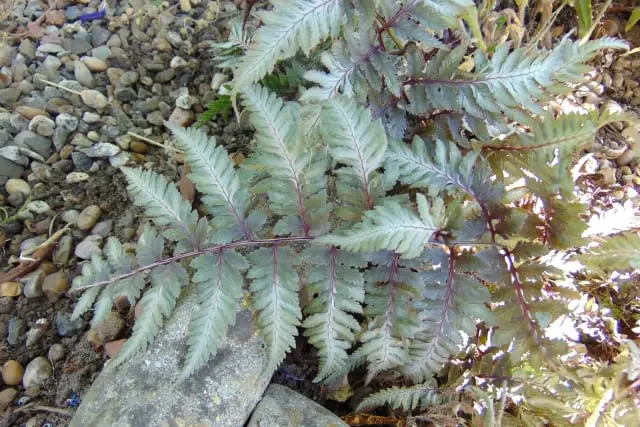
Japanese painted fern
- Athyrium niponicum
- Deciduous
- Prefers partial shade
- Height: up to 0.5 m
- Soil: acid, neutral or alkaline. Moist, well-drained.
One final point to note is that water hardness can also be a factor in pH – if your tapwater is alkaline and you water your yard with a hose rather than rainwater, you can inadvertently stress acid-loving plants. If your ferns are struggling despite a seemingly supportive plot, this could be a factor.
Beyond pH, the other soil factors that count most are the amount of organic content and the drainage. On the forest floor, ferns would enjoy a rich amount of leaf litter, pine needles, bark and other decaying vegetation. This soil, rich with humus, is ideal for most fern varieties, and so mixing in good organic content to clay or sandy soil will help them thrive.
On the same principle, providing a good mulch layer around the ferns will also help in many ways. First, it provides more humus as the mulch decays, second it helps retain moisture in the surface layer of the soil, and third it protects superficial roots from frosts.
As for sun exposure and climate, there are of course fern varieties that can manage without these ideal conditions. Some fern species like maidenhair spleenwort and Hart’s tongue can grow on the most meagre substrate in cracks and crevices of rocks and walls.
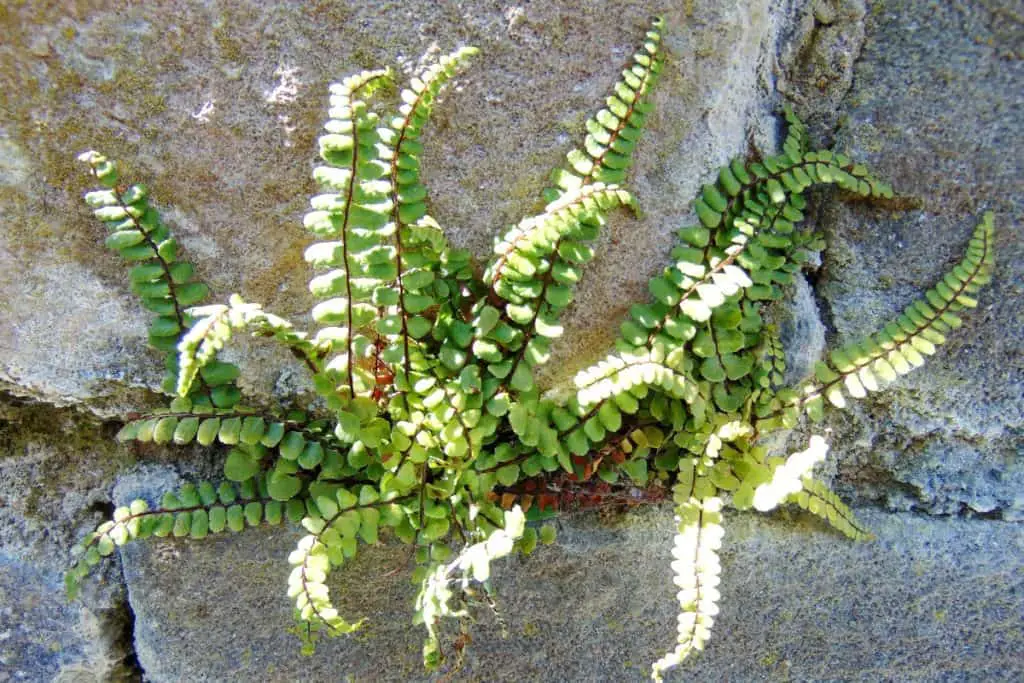
Maidenhair spleenwort
- Asplenium trichomanes
- Evergreen
- Full or partial shade
- Height: up to 0.3 m
- Soil: neutral or alkaline. Moist, well-drained.
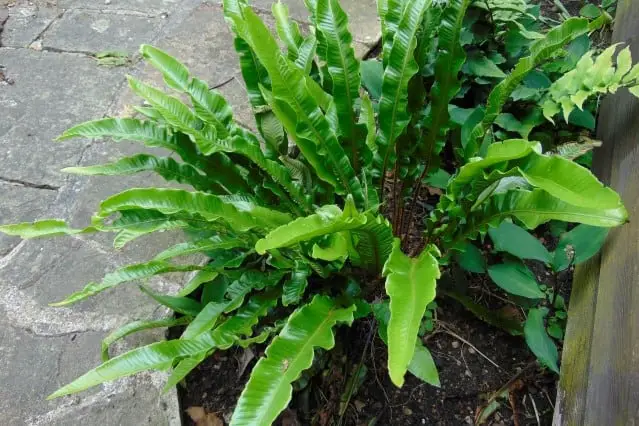
Hart’s tongue fern
- Asplenium scolopendrium
- Evergreen
- Prefers partial or full shade
- Height: up to 0.5 m
- Soil: alkaline or neutral. Moist, well drained.
The true masters of survival are the epiphytic varieties of fern, perhaps exemplified by the Staghorn ferns and Polypodium species. These “air plants” only need a surface to anchor to, and can gain all the nutrients and moisture they need from rainfall and run off.
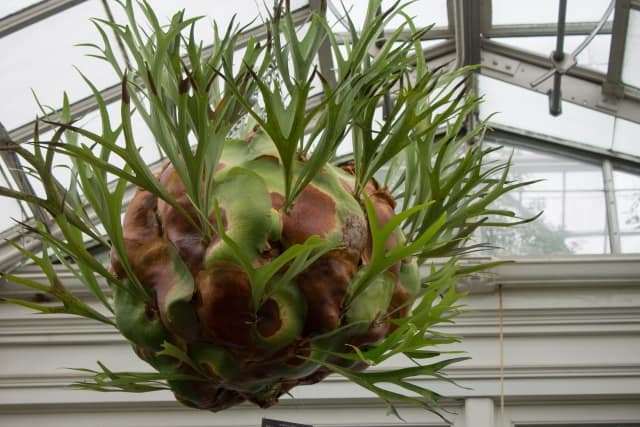
Staghorn fern
- Platycerium bifurcatum
- Evergreen
- Prefers partial shade
- Height: up to 1 m
- Epiphytic (but can be grown on loam). Keep moist, well-drained.
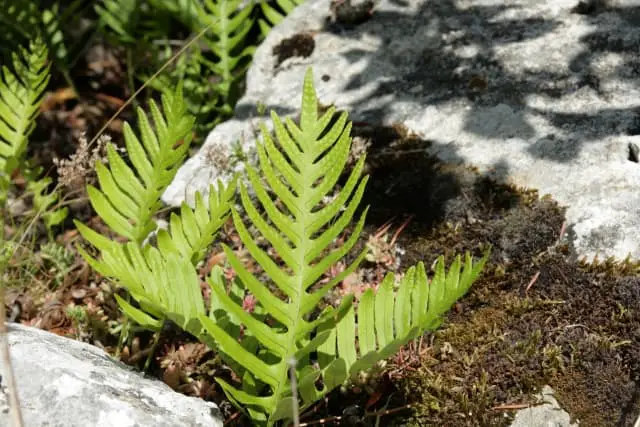
Common polypody
- Polypodium vulgare
- Evergreen
- Partial shade or full sun
- Height: up to 0.5 m
- Soil: Neutral or alkaline. Moist, well-drained.
Moisture
The final factor that is decisive in fern survival is water. Ferns favor humid environments. This is particularly true of tropical varieties, but also generally true of the vast majority of species. If ferns roots dry out, the plant is likely to die, but overwatering can be as big a problem as underwatering.
The ideal situation is soil that is moist but well-draining. A significant amount of coarse or gritty material in the soil will help maintain this balance, and regular watering is recommended during dry spells.
As ever, this rule of thumb makes sense in light of the natural woodland environment of most ferns – well mulched and moist surface soil, but with many deeper tree roots preventing waterlogging.
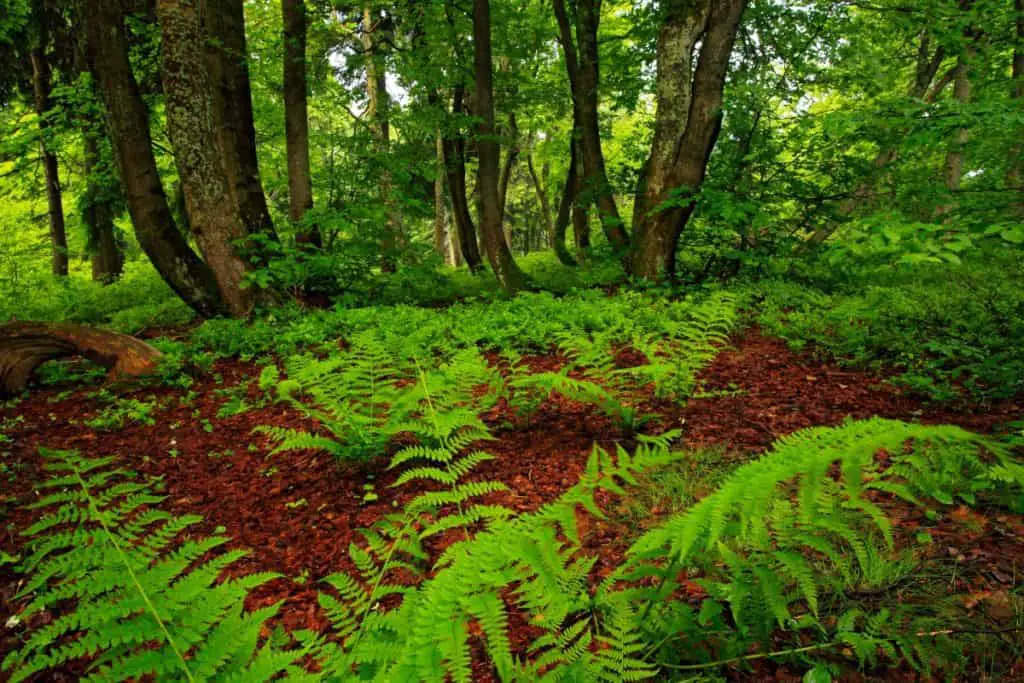
It also reflects the characteristic reproductive cycle of ferns, where spores need a wet surface for successful fertilization to occur, in contrast to flowering plants.
Again, there are exceptions to this principle. As mentioned earlier, lip ferns can tolerate dry spells, and the remarkable resurrection fern can survive for long periods of drought. Several ferns can also thrive in wet soil, and even help to dry out marshy ground if left to become well established.
Ferns are perfectly adapted to shady, moist spots, with a neutral or acid soil and plenty of organic material. Although that describes the best growing conditions for most species, there are many specialist varieties that can survive in almost any garden environment.
As a planting choice, ferns are both reliable and versatile.
